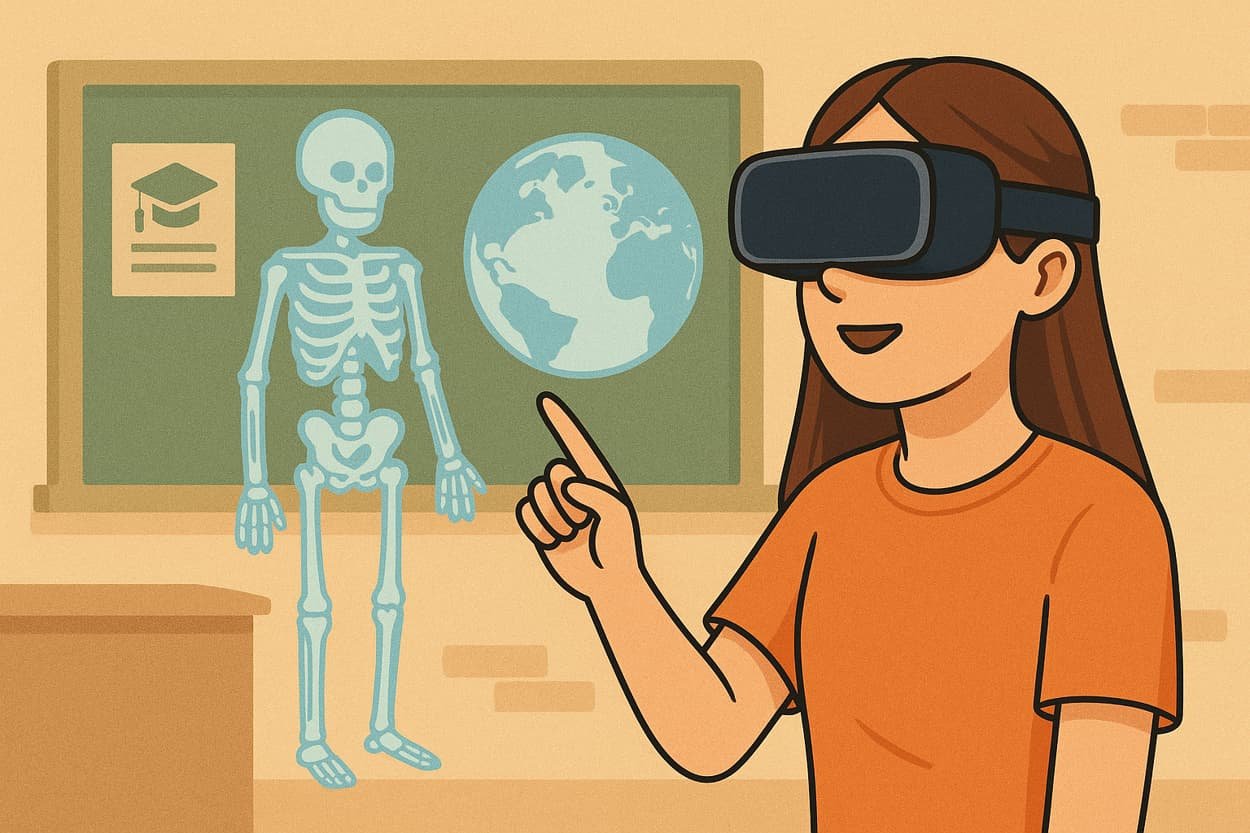Engaging students in the learning process is one of the biggest challenges educators face today. With attention spans decreasing and digital distractions increasing, traditional teaching methods often fail to capture student interest.
Augmented Reality (AR) is emerging as a powerful tool to enhance student engagement and retention. By making learning interactive, immersive, and visually appealing, AR helps students stay focused and better absorb complex concepts.
How AR Enhances Student Engagement
AR transforms passive learning into an interactive experience, making education more dynamic. Here’s how:
- Visualizing Abstract Concepts: AR allows students to see 3D models of scientific processes, historical events, or mathematical formulas.
- Gamification Elements: Learning becomes more enjoyable with AR-powered quizzes, interactive simulations, and digital rewards.
- Increased Participation: Students are more likely to engage when lessons involve AR-powered storytelling and real-time interaction.
- Multi-Sensory Learning: Combining visual, auditory, and kinesthetic elements improves knowledge retention.
- Personalized Learning Paths: AR can adjust difficulty levels and content based on individual student performance.
These features make AR a powerful engagement tool for educators looking to modernize their teaching approaches.
Practical Ways AR Improves Student Retention
By making lessons more interactive, AR significantly improves long-term knowledge retention. Key applications include:
- AR Flashcards: Students can scan flashcards to see animated explanations, making memorization easier.
- Virtual Field Trips: AR brings historical sites, outer space, or underwater worlds to the classroom.
- Science and Math Simulations: Complex equations and physics concepts are demonstrated through AR models.
- Language Learning: AR-powered translation apps provide real-time pronunciation and contextual learning.
- Storytelling with AR: Literature and history lessons come to life with AR-enhanced narratives.
By actively engaging students, AR helps them remember and apply what they learn more effectively.
Challenges of Using AR in Education
Despite its benefits, there are some obstacles to integrating AR into classrooms:
- Access to Technology: Not all schools have AR-compatible devices, but many free mobile apps help bridge the gap.
- Teacher Training: Educators need time and resources to learn how to integrate AR into lesson plans.
- Content Development: Creating AR materials can be time-consuming, though many ready-to-use platforms exist.
- Distraction Risks: If not managed properly, AR elements can divert students from lesson objectives.
With the right strategies, these challenges can be overcome to maximize AR’s educational impact.
The Future of AR for Student Engagement
AR technology is constantly evolving, and its role in education will only grow. Some future trends include:
- AI-Powered AR Learning Assistants: Virtual tutors that adapt to students’ learning needs.
- Collaborative AR Experiences: Multi-student AR interactions for teamwork-based learning.
- Cloud-Based AR Tools: Web-based AR applications that don’t require high-end devices.
- More Affordable AR Hardware: As AR technology advances, devices will become more accessible.
These advancements will make AR an essential tool for engaging and retaining students in modern classrooms.
Recommended Resources
To explore more about AR’s role in student engagement, check out these resources:
- Edutopia – Using AR in the Classroom
- eLearning Industry – Benefits of AR in Education
- Forbes – How AR Boosts Learning Retention
- We Are Teachers – AR Tools for Education
These links provide valuable insights into how AR enhances engagement and retention in education.
Frequently Asked Questions
Here are some common questions about AR’s impact on student engagement:
- Does AR work for all age groups? Yes, AR can be adapted for young children, high school students, and even university-level learning.
- Is AR only useful for STEM subjects? No, AR enhances engagement in history, literature, arts, and languages as well.
- What’s the best way to introduce AR in a classroom? Start with simple AR apps for flashcards, quizzes, and virtual tours.
- Does AR require expensive technology? Many AR apps work on smartphones and tablets, making them accessible for most schools.
